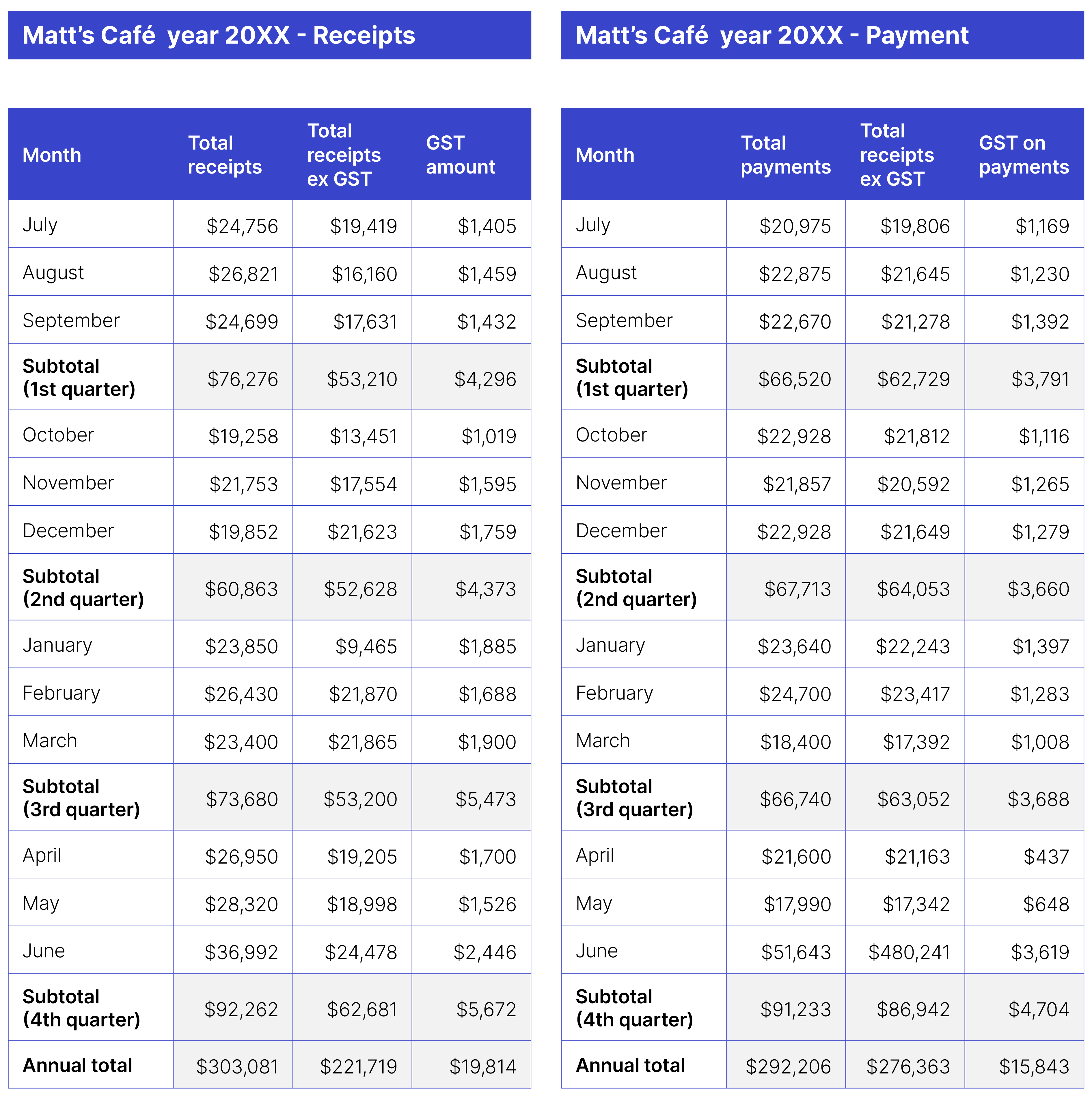
Keeping monthly summaries of your cash books provides a snapshot of receipts and payments over a longer period. These summaries can be useful tools for marking decisions and managing your business.
For example, these summaries show at a glance when sales are highest over the year. As the business owner you can think about the reasons for that. What is happening in those months? Where are the extra sales coming from? Is it because of Christmas or end of year sales? Is something different happening? If so, can that be applied to other months to improve business?
Review the image below.

The fourth quarter shows a significant increase in receipts and you may want to think about how you can continue that growth. What did you do that quarter, and can it be applied to business as usual?
The summaries can also be used to identify months where more money was spent than earned. Reflecting over the entire 12 months and considering both receipts and payments you can think about whether you have a viable business into the future.
Monthly summaries also make reporting easier. The Total receipts and GST amounts are quick to translate to labels G1 and 1A on the business activity statement (BAS). GST on payments from the expenses spreadsheet will be reported at label 1B of the BAS.
Recording business income and expenses
| Steps | Progress | |||||||||||||||||
|---|---|---|---|---|---|---|---|---|---|---|---|---|---|---|---|---|---|---|
Importance of keeping accurate records |
5 mins | |||||||||||||||||
Assessable income |
4 mins | |||||||||||||||||
|
||||||||||||||||||
Types of expenses |
7 mins | |||||||||||||||||
Categorising accurately |
5 mins | |||||||||||||||||
Reporting accurately |
4 mins | |||||||||||||||||
Related courses |
1 mins | |||||||||||||||||
Course feedback |
||||||||||||||||||
